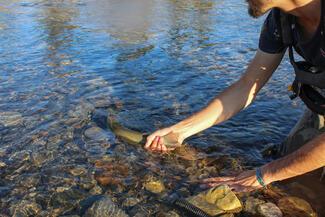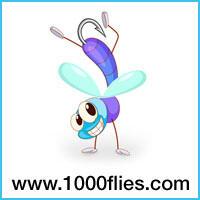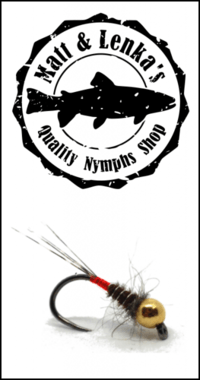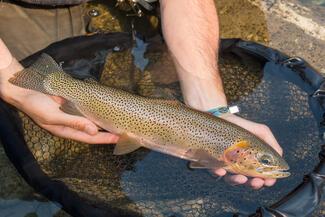
Written by Pierre Rigaleau
Translated from French by Benjamin Kerthe
My girlfriend and I finished our respective contracts at the same time and had the whole month of September 2017 available to travel. We thought about several destinations and ended up choosing the West Canadian Rockies. Despite the circumstances (traveling as a couple…) it was obvious; I’d take my fly rods to catch the iconic Rocky Mountains salmonids: cutthroat, rainbow and bull trout.
Pre-trip organisation
Before getting to the heart of the matter, I’d like to give a few tips about the organisation of such a trip. It could help if you’d decide to do the same.
As soon as we picked our destination, we started to look for a rental car, places to sleep and road trip routes to get inspired. We found a website which was a great help in our research and approach : Authentik Canada.
As well as offering rental cars, they explain the administrative process and things to know about travelling in Canada. They suggest a wide panel of routes according to the type of accommodation desired, activities and the duration of your trip. Very helpful and full of good advices to plan your trip!
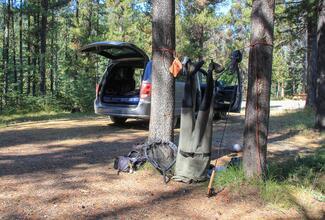
In order to reduce the trip’s expenses and stay in the “road trip style”, we decided to camp most nights. Good thing to know, freedom camping is allowed everywhere outside of the National Parks but forbidden inside. Dedicated camping spots are found though, affordable and the price change according to the facilities. Here is a useful link to find campsites, if like us, you want to experience the road trip in Canada. We often used very basic campsites (no shower or power) and the price for this type is quite cheap, around $25, especially when they are all along the fishing spots.
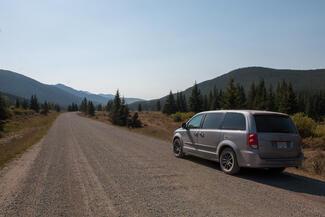
About the fishing spots. I looked for wadable river stretches along our itinerary and/or camping spots. I asked two old friends, Mario Viboux and Sabrina Barnes, both Quebec residents. Sabrina worked for 2 seasons at “Iron Bow Fly” in Calgary so she knows the area well. She pointed me into sections et recommended fly patterns according to the season. She just started her guiding business so do not hesitate to check her Facebook page or her website.
Those precious indications gave me confidence, there are so many rivers in Alberta: Oldmann river, Crowsnest, Elbow, Bow, Sheep, Highwood, Saint Mary… to name a few. To give you an idea, I recommend checking on Google Street View, any bridge above one of those.
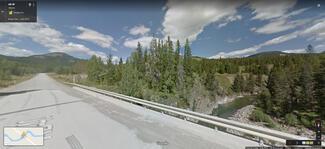
About the gear, I mostly used a versatile 9’#6. It allowed me to use dry flies, nymphs and streamers. I could also save some space in the luggage, which is a very important point when road-tripping. But if I had to go back, I would certainly take some bigger streamers, tippets and a #8 to target Bull trout!
There is no need to be fussy with the flies. Anything we use in Europe works over there, you’d just need some bigger size dry (caddis and grasshoppers). Those models are best in size 8 or 6. For the rigorous entomologist, here are 2 websites indicating hatches per type and river: Bow River Canada and Armanglers.
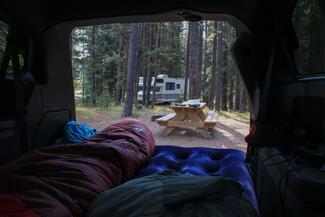
First step in Canada
Our trip began on September the 1st, with a flight Paris-Vancouver and then Vancouver-Calgary. Once in Alberta’s capital, we picked up the rental car and the company made a mistake, so we get upgraded. We went from a classic 5 seats wagon to a campervan! What a good way to start. We were very happy, a few days later, when overnight temperature dropped below 0 to have a roof over our head. Much better than the tent though.
Once all the logistic done, we were able to hit the road, heading towards the hills, pastures and Cutthroat’s rivers of the South West Alberta. Thanks to our research and the campsites map mentioned above, we knew where we were going. After two hours driving South, we left the main road for forestry gravel roads. With Seasick Steve playing in the van, the word “road trip” really started to make sense on those tracks.
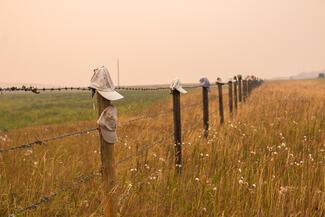
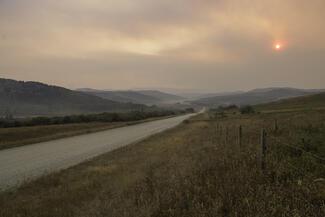
Having no idea about how long we had left before reaching the campsite, we prayed to find it before night, and above all, that they would be a spot left for us, otherwise, it would be the first night in the car. When we finally arrived, we had the surprise to find a self-registration campsite, with still a few spots available. In this type of rustic site, all you have to do is write the dates of stay and leave the amount due in a mailbox. This freedom and trust put into campers is very different from what we are used to in France. But we get used to it. Once the camp is set up, after the sunset, we can enjoy a local beer, with the river flowing just 50m from us.
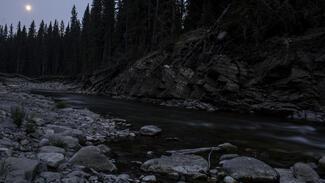
Despite this fright the first night, we realised they was seldom any need to book campsites in advance, at least in September. Which would give us even more freedom, adapt to weather and our mood.
First Cutties
At sunrise, the mix of jetlag and excitement to discover the river get me out of bed. We realised this first night how low the temperature would drop, so even in September, a decent sleeping bag is important. Anyway, with the first lights, I was amazed :
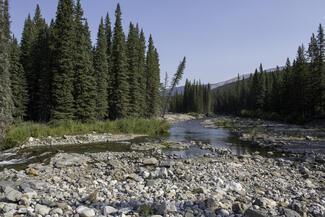
I get a few information from a local, apparently, the river is well furnished in insects !
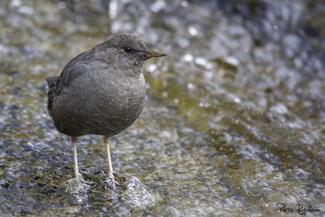
It made me optimistic for the rest of the trip. Once my prospection tour done, Ms awake, the breakfast devoured, we decided to look for a quieter spot to ramble around, and mostly to fish for god sake.
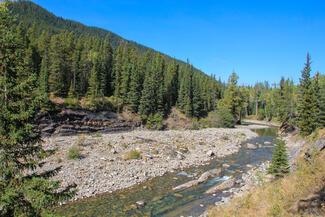
We went back on the forestry road along the river. Wow, the river is gin clear, flowing through pastures alongside hills. Not far from the idyllic landscape I imagined. After a few kilometres, we reached a more accessible section of the river. We parked the van, get geared up and headed down to the bank. We met a young couple fishing. I engaged the conversation despite my poor English. They were very kind and made the effort to speak slowly. I end up understanding they took fish and when I saw what they used, I feel relieved about the size of my flies and tippet. A massive caddis nymph size 6 and a very impressive indicator…
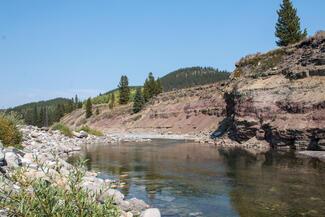
We thanked them and kept walking down to find a better section, most importantly free of fisherman. Looking at that pool, I was very confident. I start at the tail and make my first casts with a dry. A few drifts without results made me switch to a nymph, a pheasant tail with a copper bead head, back to basics, to hopefully catch the first fish of the trip. It only took a few minutes, my first cuttie was on. Not a very big fish, but with magnificent colours.
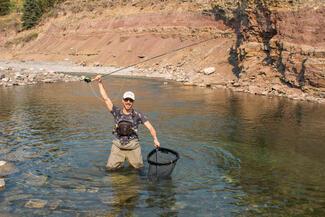
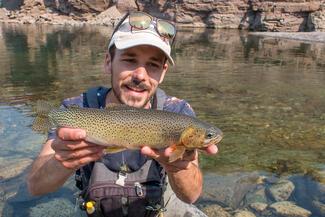
Another one just a few minutes later. After the pictures, my eyes got attracted by some surface activity. The first rise just appeared in the middle of the current. And suddenly, another one. Such a delight to see those fish coming from the bottom in such a crystal-clear water. With patience and observation, I identified mayflies drifting on the surface. Indeed, there was a good chance that they were feeding on them. So, I went back to the dry, with a hare hear emerger and within 3 drifts I was on. Still the same size but on dry it’s even better.
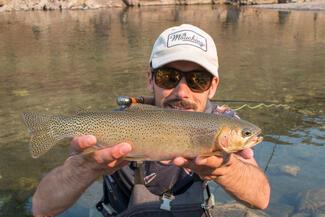
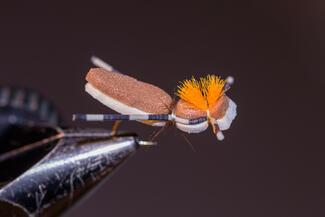
I take some time off to enjoy the Canadian sun and leave the pool to rest for a while. It’s 30°C here, and my logic of French angler tells me it’s not the best time of the day to catch trout. Nevertheless, the loud noise from the paddocks around make me tie a big grasshopper foam size 8 and within a few casts, a big shadow came out from the depth to swallow it. Here it is, the ‘Canadian Dream’! Sabrina told me to not hesitate during those end of summer afternoons, and she was right. The clap of the fly on the surface seemed to attract the fish. The foam body is the most adapted to this kind of action and proved to be very effective (Thanks to Yves Vincent who gave me insights for the tying process before the trip).
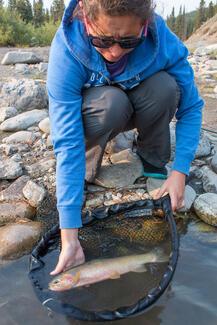
The nice catches continued for the whole afternoon. Fish with magnificent patterns, each more beautiful than the last…
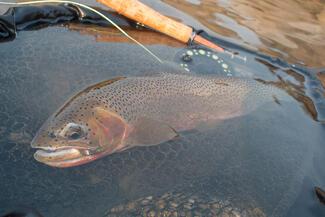
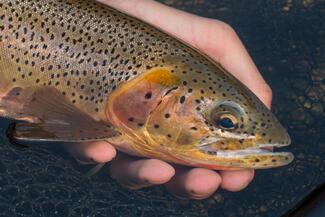
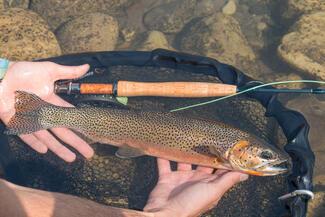
At the end, this grasshopper allowed me to catch the most beautiful cutthroat of the day, and also from the entire trip. Fish from 35 to 50cm (picture attached, a real stonker).
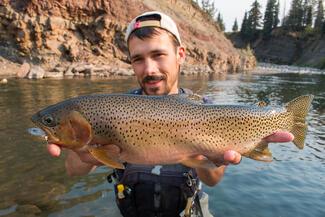
This fantastic afternoon will be ending on a great campsite, along the Oldmann River.
Bush Fire
I woke up very early this morning, impatient to discover the river flowing 50m from my pillow, rod in hand.
The river is slightly different from the day before, flowing between big boulders alongside pine forest. Water is still gin clear. A very slow start, after one hour, I end up catching two trout, with a Wolly Bugger, a pattern dear to our Quebec friends.
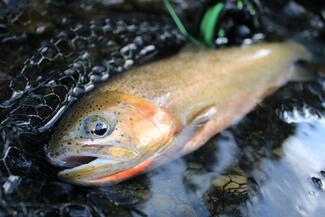
After our brunch which became an institution during the whole trip, we started a photography hike along the river. We haven’t been disappointed! A path overlooks a big pool and we assist to a feast. Several fish are feeding on surface. Those pictures of cutthroats coming from the bottom, in the gin clear water will be in the highlights of the trip.
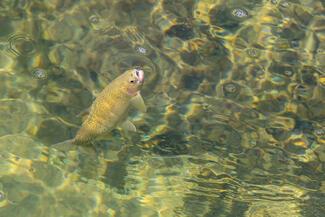
After shooting 1200 times to get the right picture and at the same time filled my SD card, I was looking forward to getting geared up again. Unfortunately, our plans had to change. On the way back, we get intercepted by the park rangers and they had to evacuate everybody because bush fires were threatening the area. We grudgingly had to leave and head North to the Rockies, through amazing landscapes though.
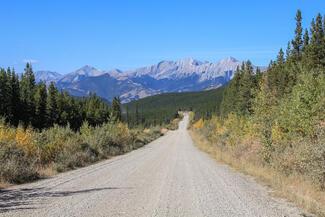
Hopefully for me, and unfortunately for Caro, I had done research about the streams between the Park and the Rockies. I noted the Highwood River and I didn’t know it yet, but I wouldn’t be disappointed, once again. After 200km heading North, we could feel the changes as we get closer to the Rockies. The riverbed was much wider, with much bigger rocks. The number of arms, the rolled rocks and the massive logs witnessed how powerful it could be.
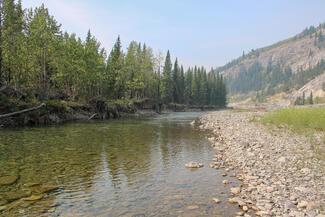
Despite the important changes with the days before, I was still very confident. I had Ms authorisation to fish two or three hours. With its good results in the past, I choose to use the grasshopper again for a start. It didn’t take long until I caught the first small rainbow and I decided to insist in this beautiful water.
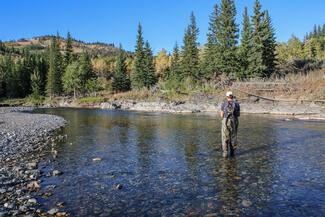
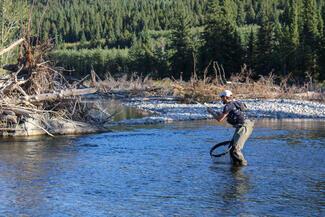
Disturbed by Caro talking, I wasn’t really watching but I heard a familiar noise and my eyes went back on my fly. It had been swallowed and luckily, I had the reflex to strike. The battle started. It looks like the fish knows what he is doing and where the logs are because he tries to reach them very hard. After a good fight, I finally netted the trout. A magnificent cuttbow, more than 50cm long, with perfect fins and body. Cutbows are hybrid between cutthroat and rainbow tout.
I had enough and ended the session on this good note, happier than ever. It’s for this kind of fish that I dreamed to discover the West of Canada.
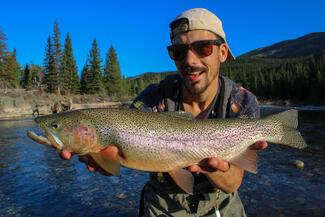
Heading to the Rockies.
After a great night in a campsite a few km from the river, I was back on the banks of the Highwood the next day at lunchtime. I had another two to three hours before getting back on the road. I picked a faster section which gave me two beautiful rainbows with perfect colours.
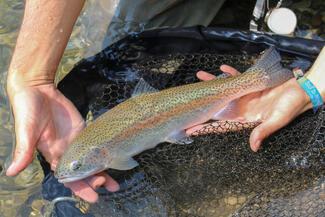
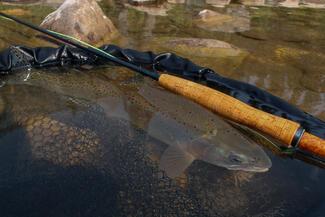
I ended the day with a brook trout, which are quite rare here according to the park ranger. A good chat with him allowed me to know more about the local salmonids’ populations. Like in Europe, each species preferences and inter species competition drive lengthwise zonations of the fish populations. When a watershed has all the salmonids species present in the Rockies, its organization is: brook trout in the headwaters, then heading downstream, cutthroat/bull trout, rainbow and finally brown trout in the plains. It is indeed theory and they are zones where several species mix, which ends up in hybrids (like the cuttbows we talked about earlier).
Cutthroat is endemic to the Rockies and subject to numerous studies and specific protective measures (catch and release only rivers for example). If you are interested, you can find hundreds of studies in free access online. After this very interesting discussion, we went back on the road heading towards Kananaskis country and Banff. The rest of the trip in the Rockies, higher in altitude, will not be favourable for fishing this time of the year. My rods will be left behind for a while, until the Pacific coast and Vancouver Island (which might be the topic of another article, who knows). I’ll end up this one with some photographs of the trip, the animals we’ve met and the mood of this fantastic country that are the Canadian Rockies.
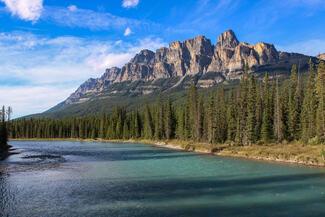
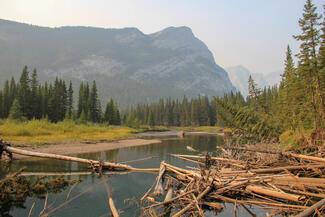
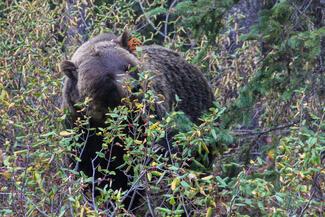
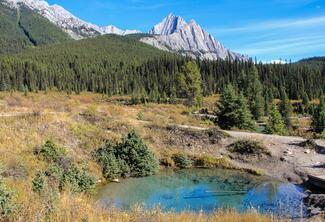
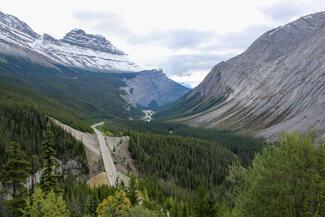
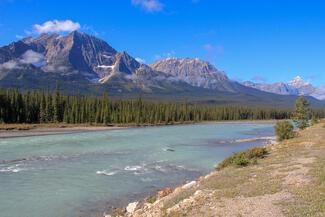
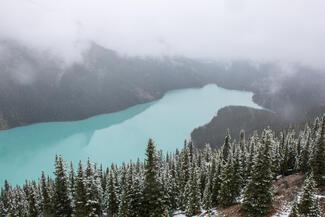
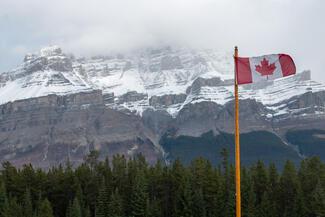
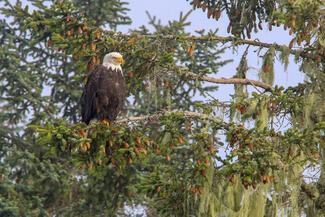
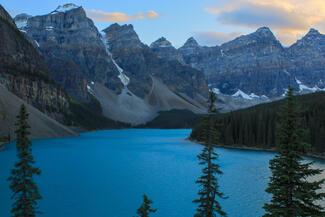
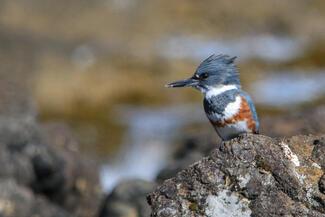
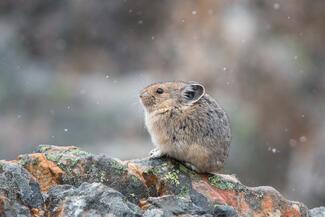
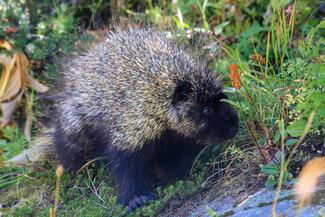
Usefull links :
